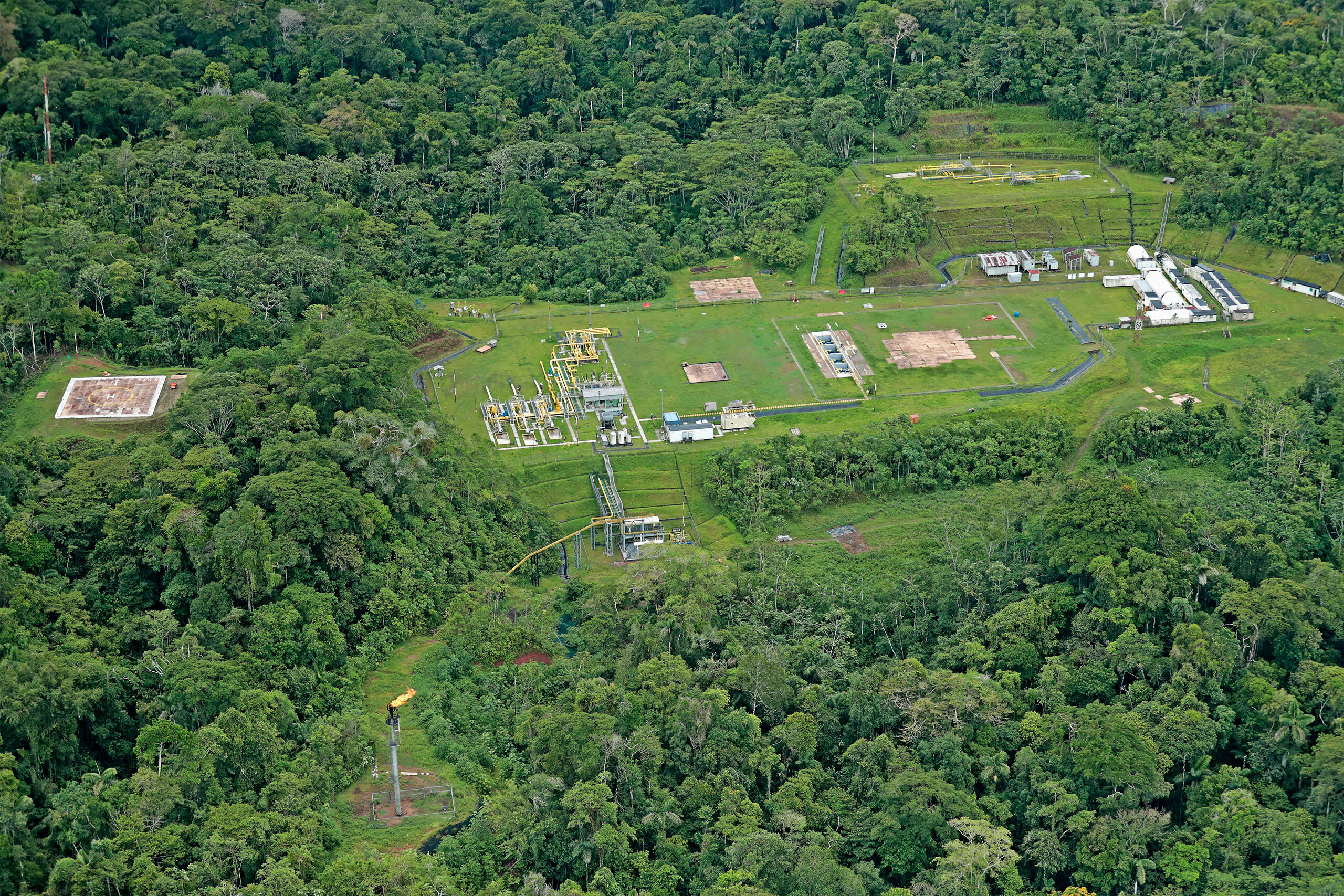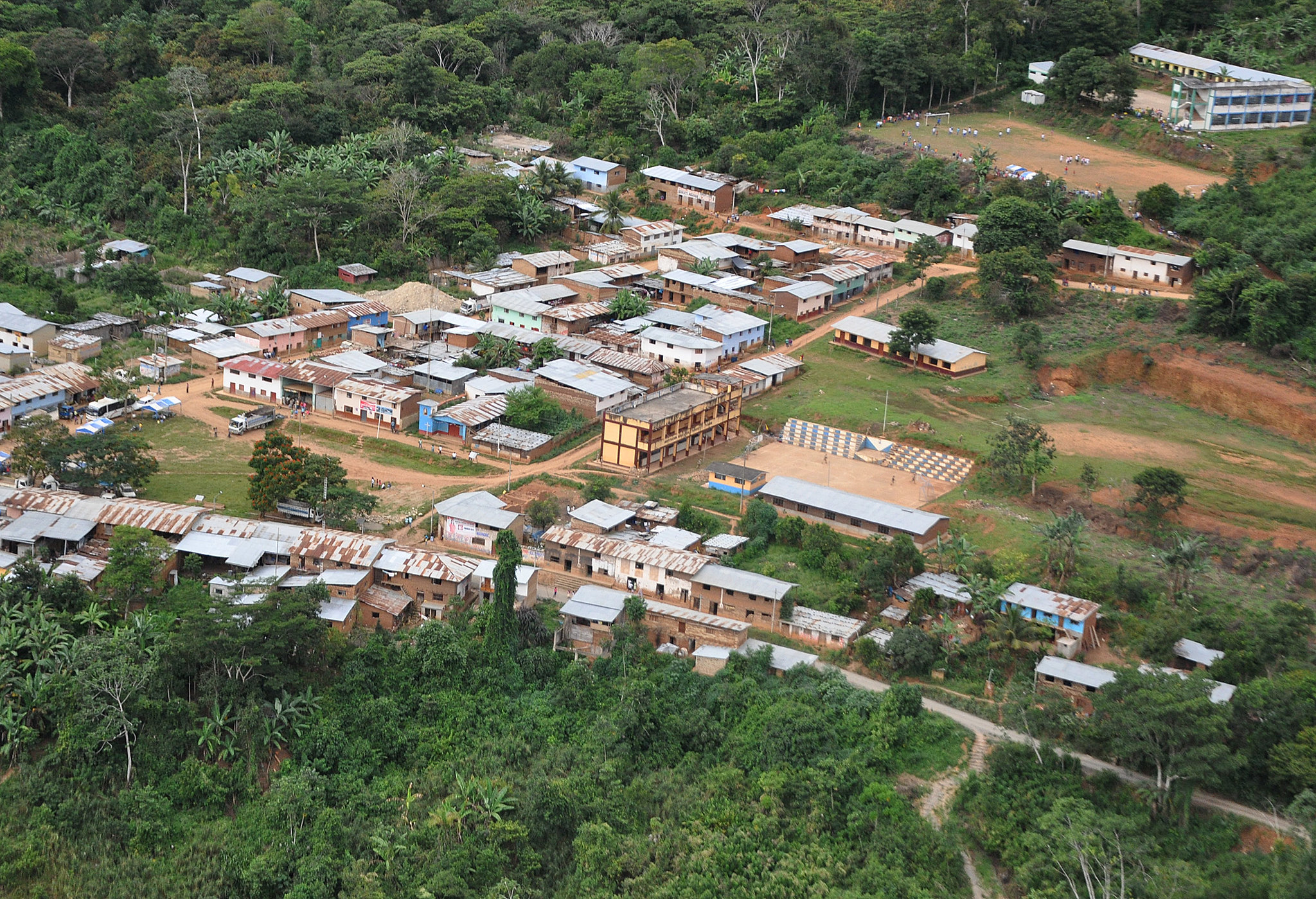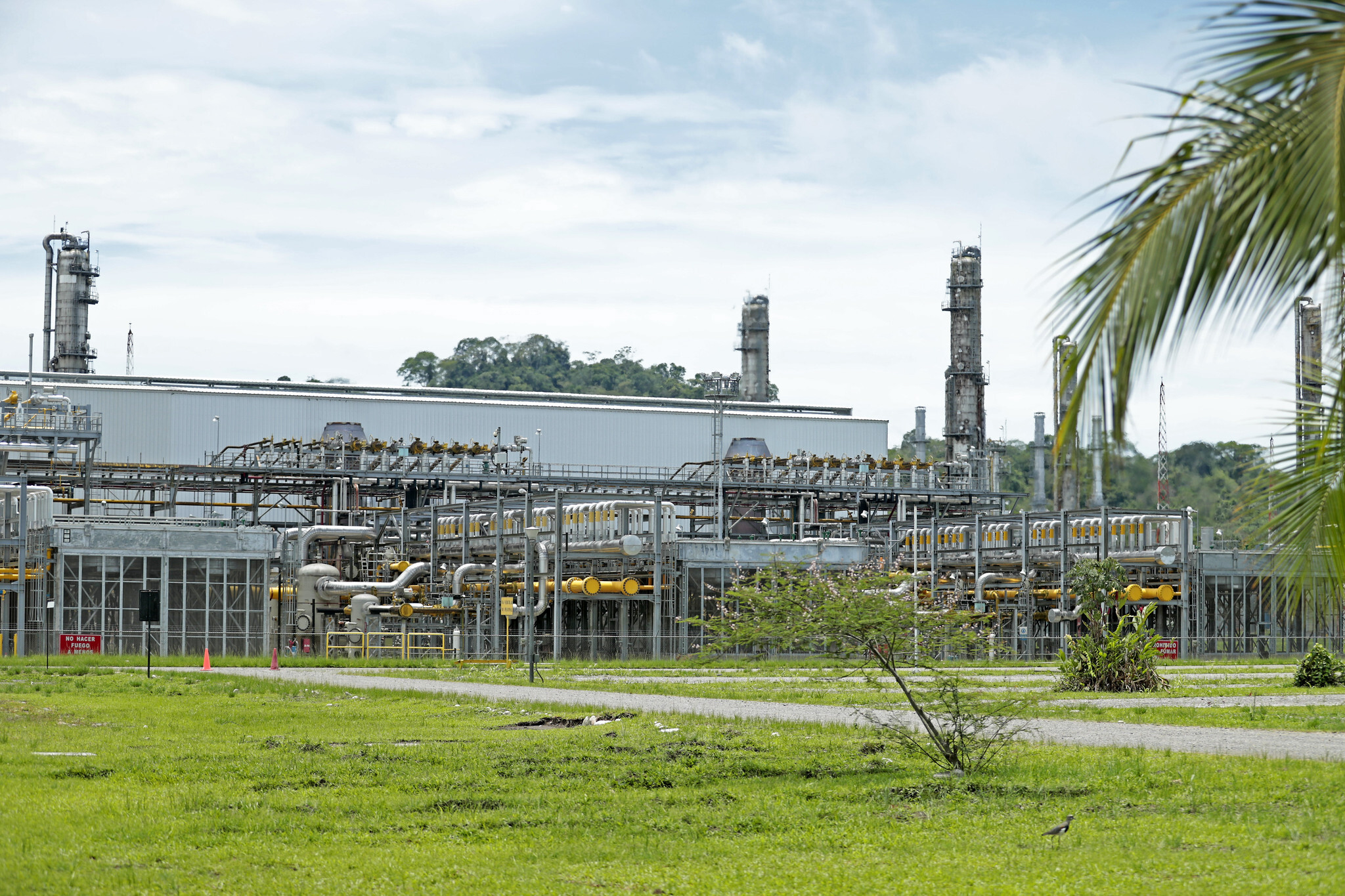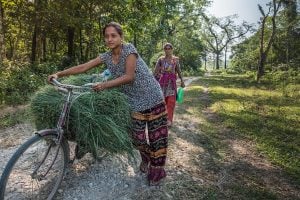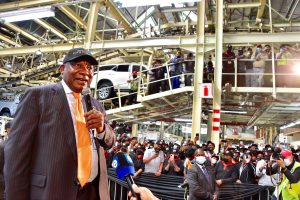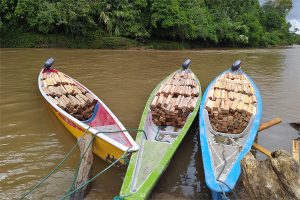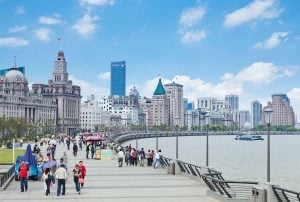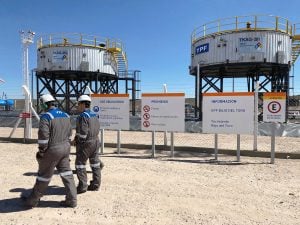“If I had stayed in Nuevo Mundo until I finished high school, I would have been just another villager,” says 24-year-old Teddy Sebastián Ríos. Instead, he is the first qualified economist to come from the Matsigenka, one of the Peruvian Amazon’s 51 Indigenous groups.
Ríos is speaking on the phone from his home in Cusco, a city in the Peruvian Andes some 250 kilometres from his birthplace. He says such a conversation would likely be impossible from Nuevo Mundo, where decent telephone signal and internet connections are lacking, among other services.
Paradoxically, Nuevo Mundo sits within one of Peru’s richest districts, Megantoni. It is one of 18 districts in the province of La Convención, all of which receive substantial income thanks to the extraction of natural gas at the vast Camisea fields, home to 90% of Peru’s gas reserves. This August marks the twentieth anniversary of operations at the project, comprising two blocks operated by a consortium of multinational oil firms, with partners from Algeria, Argentina, South Korea, Spain and the United States.
Megantoni alone receives an average of USD 65 million a year from gas extraction. However, this income has not necessarily been reflected in the quality of life of its 7,000 inhabitants. The district does not have a sewage or drinking water system, and electrification only arrived in 2019, followed by the first health centre in 2021. Schools in the district have struggled due to a lack of staff, with Nuevo Mundo’s secondary having only seven teachers. Ríos had to leave home at a very young age to pursue opportunities that the Matsigenka cannot typically access.
Another paradox here is that no household in the wider region, also named Cusco, is connected to the gas network; in fact, only seven of Peru’s 25 regions have residential gas connections.
Despite its uneven distribution, Camisea’s gas still accounts for a considerable share of Peru’s overall electricity production, contributing over 42% of generation in 2023. Hydropower, long the country’s largest source of electricity, provided nearly 48%, though its contribution fluctuates seasonally, with gas generation ramping up during drier periods.
In recent years, severe droughts have exposed the fragility of the sector, and with just over 20 years of proven gas reserves left to exploit, questions have arisen over the pace of the country’s transition to cleaner sources – and the contentious role of gas as a possible “bridge fuel” to them. For residents living close to Camisea, however, the issues of energy access, development and benefits from the fields’ operations are those that burn strongest.
Failed distribution
Between 2017 and 2023, the overall budget for La Convención’s districts was more than USD 2.6 billion, according to Dialogue Earth’s analysis of finance ministry records. Of this total, USD 1.6 billion came from what is known as “the canon” – a fund amassed from half of the taxes and royalties paid by companies in extractive industries, such as gas exploitation.
Megantoni received the biggest slice of the canon during that period: USD 455 million. However, these funds do not yet appear to have been effectively funnelled towards the district’s development. Health ministry data reveals that in the first half of 2023, nearly two-thirds of children under three years of age in Megantoni were reportedly suffering from anaemia, while roughly two out of every five children under the age of five were estimated to face chronic malnutrition. According to the country’s development and social inclusion ministry, 97% of its households are missing at least of these basic amenities: drinking water, drainage, electricity and telephone access.
Epifanio Baca, an economist and researcher for public resources monitor The Citizen Proposal Group (GPC), says these districts are beset by inefficiency and corruption problems.
On average, the 18 districts of La Convención executed 73.8% of their budget allocations over the past seven years, according to data analysed by Dialogue Earth. In other words, they were unable to invest USD 705 million across the province. Megantoni was one of the districts that struggled most to invest its budget, with an average annual budget execution rate of just 68.7%, meaning USD 201 million went unspent. Meanwhile, in Echarati, another gas-rich district, its last five mayors have all been jailed for alleged corruption.
“There is also a co-responsibility of the central state,” says Baca, “especially the ministry of economy and finance, which without much concern or initiative transfers so many resources knowing that the management capacities in these municipalities are not prepared to process them.”
The Peruvian government is obliged to distribute the canon among regional governments and municipalities in the locality of the gas fields. But according to Baca, this has so far been done without ensuring infrastructure investment strategies are in place, which is limiting the potential benefits.
“This is happening today in a dramatic way in Megantoni, a newly created municipality [in 2016]. There is no way that an entity of that size, so far away in the depths of the jungle, can efficiently manage those resources,” Baca adds.
Another issue is that the canon law only permits districts to spend these funds on “investment expenses”, rather than on the costs of running a district, such as the hiring of doctors and teachers, for example, and the provision of services. Baca points out that this leaves problems such as malnutrition mostly in the hands of the central government, because the solutions require such “running costs”. He says this constraint must change.
The Ministry of Economy and Finance did not respond to Dialogue Earth’s requests for interview or queries on these issues.
Despite the apparent shortcomings of the state, money continues to pour into Megantoni. As well as the canon funding, gas extraction is boosting the local economy. Nuevo Mundo, for example, receives millions of dollars from Spanish oil firm Repsol, a partner in the Camisea consortium, to rent communal land. This enables Repsol to operate Lot 57, a gas block adjacent to the Camisea fields. It is also what enabled Ríos to finance his university studies, thanks to a community fund.
Pledges broken and delayed
Aside from royalty payments, Camisea’s impact on local businesses has been substantial. Fernando Jiménez Ugarte, an engineering professor specialising in hydrocarbons at the Pontifical Catholic University of Peru, says local industries have saved by switching from diesel to gas power. With the help of government incentives, the electricity sector has also reduced its costs by increasingly shifting to the use of thermal energy production, based on gas, diesel and derivatives – though this has also contributed to an increase in emissions.
On the other hand, Peru’s gas push is still running up a social debt. Promises of gas for all have long been on the lips of politicians, but after eight presidential administrations, supplies have reached few homes. The distribution has also been very unequal, with almost all new connections happening in the country’s coastal regions. As of August 2023, more than 1.2 million homes, businesses and social institutions had been connected, many as a result of the state’s Social Energy Inclusion Fund (FISE) since its creation in 2012. However, over 92% of these connections came in the capital city of Lima and the commercial hub of Callao. In Cusco, where the gas deposits are located, not a single family has been connected by FISE.
High-demand areas, such as those containing industrial consumers and electricity generators, are typically close to towns, which lowers costs and thus makes residential gas distribution in the vicinity profitable. For more than 15 years, repeated announcements have been made pledging to develop new petrochemical industries, whose gas power demand could make such network expansions feasible, including for the production of fertilisers to support domestic agriculture. However, very little has materialised.
In April 2023, four months into her first term, Peru’s current president, Dina Boluarte, announced plans to build 1,000 kilometres of gas networks for 11 regions. Three months later, she said a new petrochemical plant would be built in the south. Despite later assurances that the location would be known before the end of that year, further details are yet to emerge.
In 2009, then-president Alan García (2006-2011) announced that the construction of multiple petrochemical plants would commence within two years. That November, the southern port town of Matarani, in the Arequipa region, was floated as a potential location. Private projects were then proposed for Pisco and Marcona, both in the southern region of Ica. Neither came to fruition.
In 2014, during the government of Ollanta Humala (2011-2016), the Southern Peru Gas Pipeline project was awarded to the Brazilian conglomerate Odebrecht. Valued at more than USD 7 billion, more than 1,100 kilometres of pipeline were planned between Cusco and the southern department of Moquegua, but the project has been paralysed since 2017 following Odebrecht’s involvement in one of Latin America’s largest ever corruption scandals. Maintenance of idle pipelines is reportedly costing the state at least USD 40 million a year.
Following Humala, the Martín Vizcarra administration (2018-2020) attempted to revive the project and incorporate new regions into the system, while President Pedro Castillo (2021-2022) promised that construction would begin in 2025. The Boluarte government has not commented on the project’s future.
Dialogue Earth approached the Ministry of Energy and Mines for comment on the status of these projects, but at the time of publication no response had been received.
Concerns and transitions
Some Indigenous communities living near Camisea have said they were not given prior consultation on projects near the fields. This mechanism, designed to protect fundamental rights in the face of development projects, entered into discussions in Peru in 1995, after it signed the International Labour Organization’s Convention 169. However, the mechanism was not enshrined into Peruvian law until 2011.
Henry Carhuatocto, a lawyer and executive director of the Institute of Legal Defence for the Environment and Sustainable Development (IDLADS), agrees with the communities’ claims. With regard to the Camisea consortium’s two blocks, he claims “there was no consultation regarding the concession contracts, the environmental impact studies or their modifications.”
FPIC is about allowing people to give or withhold consent for projects that may affect them. Its main and original focus is Indigenous peoples but it is also considered best practice for local communities of all kinds. FPIC is enshrined in the UN Declaration on the Rights of Indigenous Peoples, the Convention on Biological Diversity, and the International Labour Organization Convention 169.
Another gas field in the vicinity that is yet to go into operation has also sparked controversy. In 2005, Block 58 was awarded to Brazil’s Petrobras, then transferred to the China National Petroleum Corporation (CNPC) in 2013. A year later, CNPC submitted a new environmental impact study to the environment ministry. As this happened after Peru’s prior consultation law came into force, it was thought that there would be a process of dialogue between the company and the relevant Indigenous communities. However, according to a 2020 publication by Law, Environment and Natural Resources (DAR), a Peruvian civil society organisation, CNPC was said to have “avoided this possibility”.
As global conversations around the energy transition gather pace, and progress is made in some regions, the role of natural gas remains contentious, for Peru as in other parts of the world. The gas industry and many producing countries have regularly touted it as a “transition” or “bridge fuel” towards cleaner energy systems based on sources such as wind, solar and hydropower – a term that controversially also appeared in the final agreement at last year’s UN climate summit.
Concerns over short-term economic impacts in countries reliant on gas for energy and export revenue remain an obstacle for some observers. Jiménez Ugarte, for example, says the use of gas “has to be encouraged because, if not, it will remain in the fields”. A 2021 Inter-American Development Bank study, however, estimated that some 70% of proven natural gas reserves in Latin America will need to remain in the ground for the region to meet its climate targets under the Paris Agreement, while similarly acknowledging the economic challenges for gas-dependent countries.
Though also a subject of debate, Jiménez Ugarte points to a larger role for hydropower as another possible avenue for cleaner energy. “Our country only uses 6% of water for hydropower. It has proven capacity for 15 times more, but we don’t use it,” he claims.
Studies have also pointed to Peru’s high potential for solar and wind power, but the country is lagging behind its neighbours in building its capacity of these resources. Solar, in particular, has been highlighted as a solution to energy access in remote areas of the Amazon – including, potentially, places such as Megantoni and other districts of La Convención.
